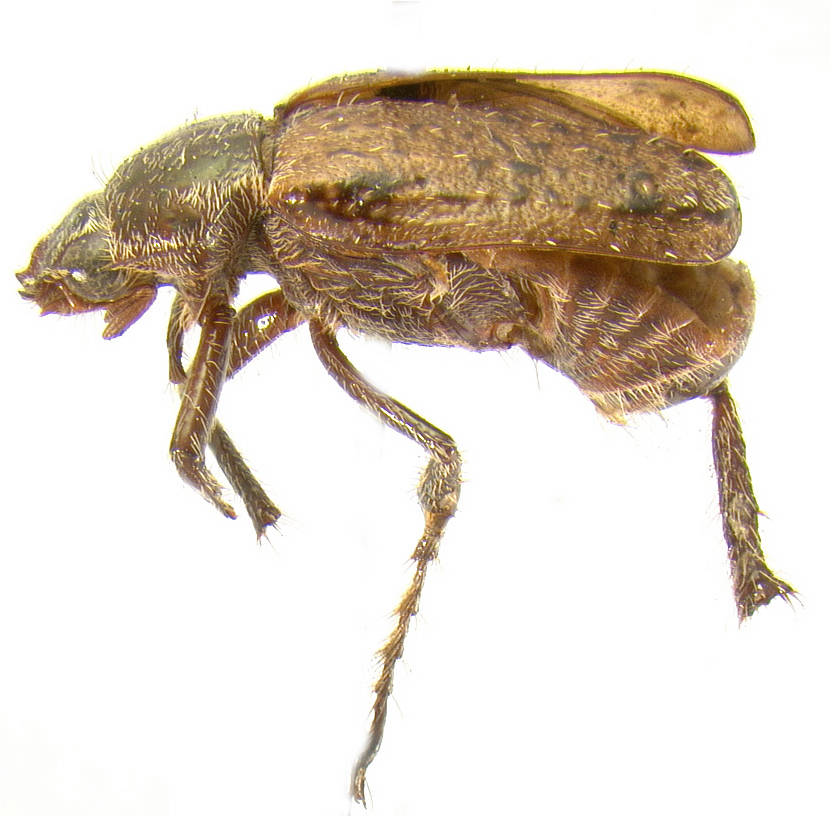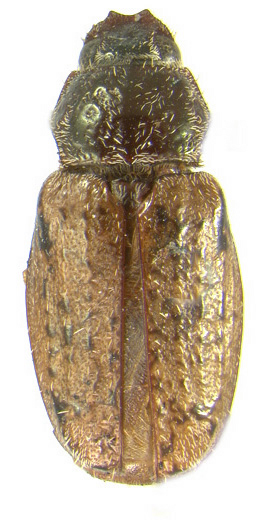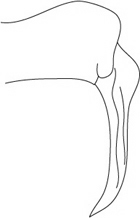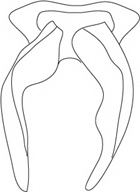 |
|||||||
|
|||||||

Photos by Kerry Katovich. .
| Superfamily..... Family............ Subfamily....... Tribe.............. Genus............ |
Scarabaeoidea Scarabaeidae Melolonthinae Macrodactylini Manopus |
Diplotaxini |
Diagnosis: this species is recognized by its 9-segmented antennae,
and trapezoidal, rectangular pronotum with posterior margin weakly tridentate.
Description:
Measurements: Prothorax at widest point 3.2 mm, elytra at widest point 4.6 mm, length 10.8 mm.Color and vestiture: Head and pronotum dark brown, vestiture of white setae, scutellum dark brown, covered with white setae, elytra golden brown, mottled, scattered white setae present, ventral surface light brown.
Head: Clypeus coplaner with frons, with anterior angles acute; labrum not coplaner with clypeus, prelabrum not visible; labium with prementum quadrate, medially grooved; antennae 9-segmented, segments 7-9 forming the club, club thin, length equal to segments 3-6 combined, antennal insertions not visible in dorsal view.
Prothorax: Pronotum trapezoidal, rectangular, widest medially, anterior angle acute, lateral margin convex, posterior angle acute, posterior margin straight, weakly tridentate; coxa transverse; tibia bidentate; pretarsus with claws weakly divergent, equal in length, both claws narrowly split.
Mesothorax: Scutellum chordate; elytra longer than wide, widest medially, lacking striae, surface mottled brown in coloration, surface with scattered white setae, anterior and posterior umbones prominent.
Metathorax: Metathoracic leg with coxa widely separated; femur ovate, narrowing distally; tibia clavate, widest medially, narrowing in distal 1/4th, widening at distal margin, posteroventral distal margin with two large spurs, spurs above tarsal articulation joint, posterior distal margin with deep, broad U-shaped groove; pretarsus with claws similar to prothoracic and mesothoracic claws.
Abdomen: Ventrites 2-4 subequal in length, 5th visible ventrite (=propygidium) length equal to the length of ventrites 3-4 combined, 6th ventrite equal in length to 5th ventrite length, posterior margin with a slight membranous margin, ventrite and sternite of 5th abdominal
segment lacking a complete suture; pygidium tear-shaped, longer than wide, narrowing posteriorly, posterior margin blunt.
|
||||
|
|



